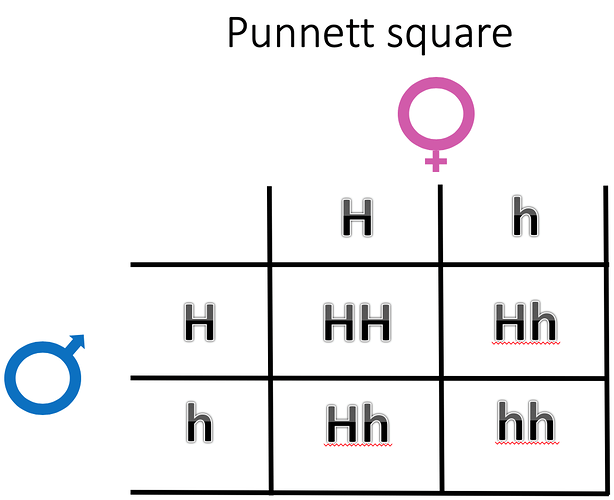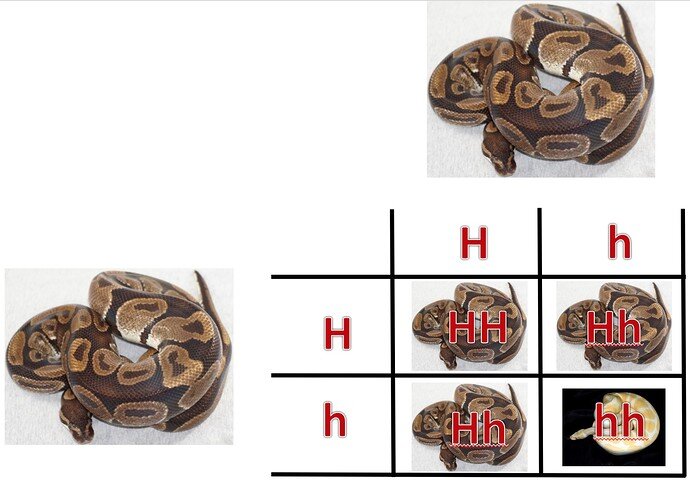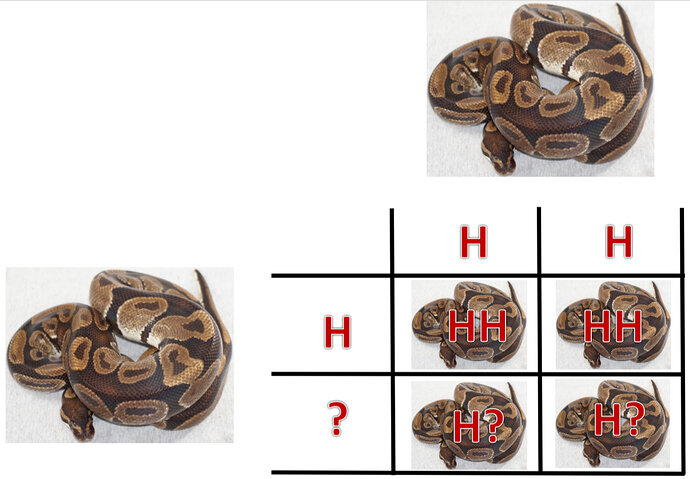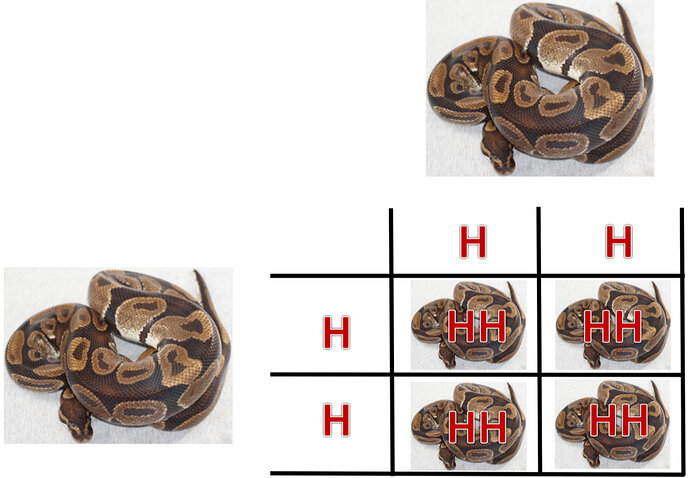You continue to ignore the fact that this is not an iterative process. The probability of an animal is only applicable when choosing animals out of a single specific clutch. It cannot be carried forward. So let us try this looking at the actual Punnett square and how the probabilities are determined.
A basic Punnett so we all know what we are taking about here.
.
.
To start with, we make a 100% het with this breeding. All the offspring are phenotype normal but they carry a single copy of the recessive gene (h)
.
.
If we take one of these 100% het animals (Hh) and breed it to another of these 100% het animals (Hh), three of the offspring from this pairing are phenotype normal.
.
.
When we look at the probable genetic outcome of this clutch we can very plainly see that, statistically, 2 of the 3 normal looking animals will carry a copy of the recessive gene (h). However, because we cannot tell by appearance alone which two are the carriers, we then label all of these normal looking animals as 66% possible het because there is a 66% probability of any given animal being a het (Hh).
With me so far?
Next, we take one of these 66% probably het animals (genotype H?) and breed it to a WT (HH). All of the offspring from this pairing are phenotype normal.
.
.
When you look at the Punnett square what is important to note is that, even without determining the het status of the unproven animal, we can very plainly see that half of these animals are statistically going to be WT (HH) while the other half are an unknown. Do you see the relevant word there? HALF. So when considering the probabilities of this clutch, you have a statistical 50/50 chance of getting a WT (HH) or a statistical 50/50 chance of getting an undetermined (H?). This is the same statistical probability as the 100% het x WT breeding was because there are two copies of the gene in play making this a binary matter
What you do not have, correction, what you cannot have, is a Punnett square where only one of the four possible genetic outcomes is the unknown (H?) while the other three are WT (HH) As such, you can NEVER have a 33% probable het from any type of breeding.
If the original unknown animal proves out you can end up with offspring that are 50% probable hets
.
.
Or, if the original unknown animal does not prove out you end up with 0% probable hets
.
.
You cannot, ever, create a Punnett square where a 33% probable het or a 25% probable het is an outcome





